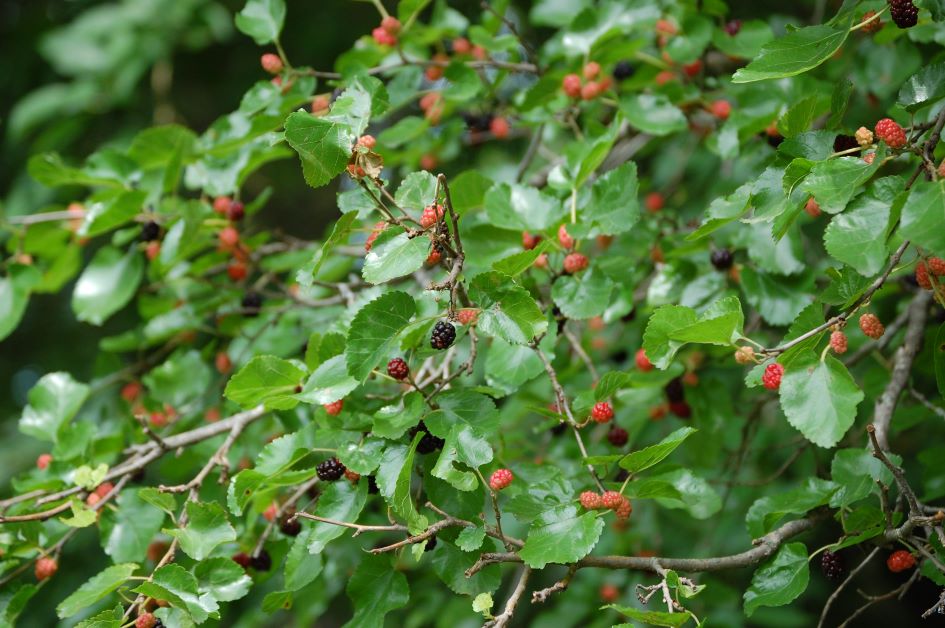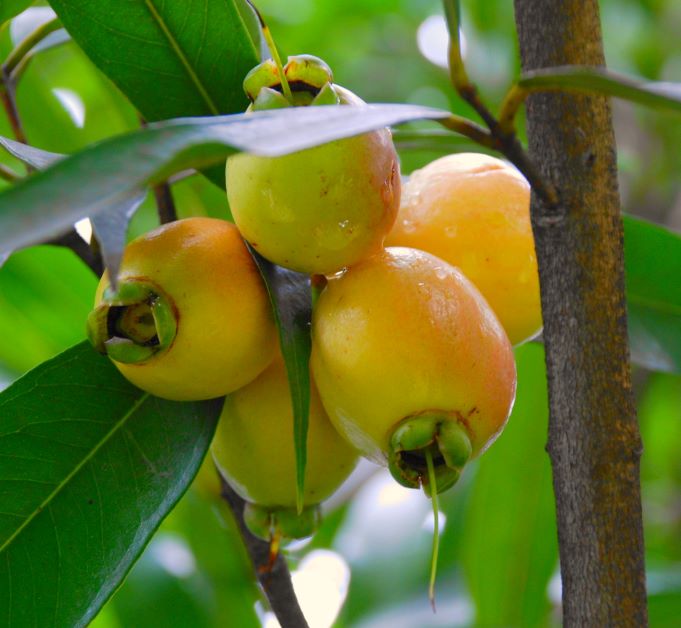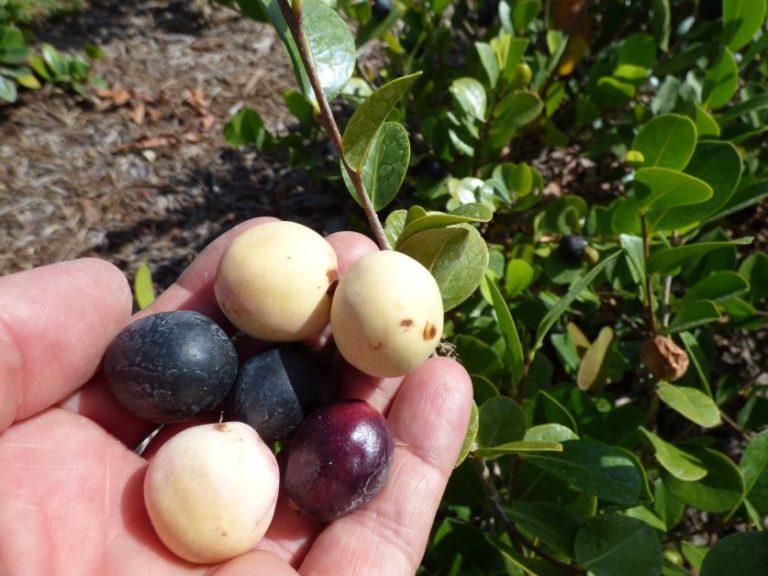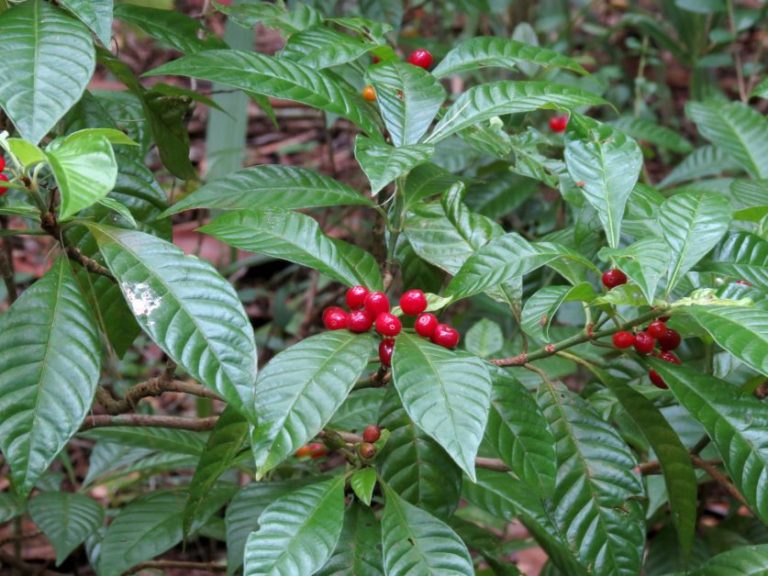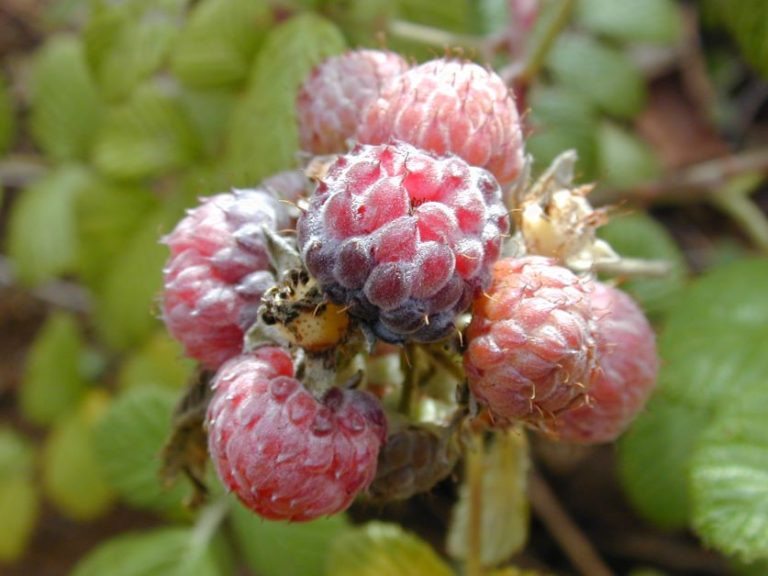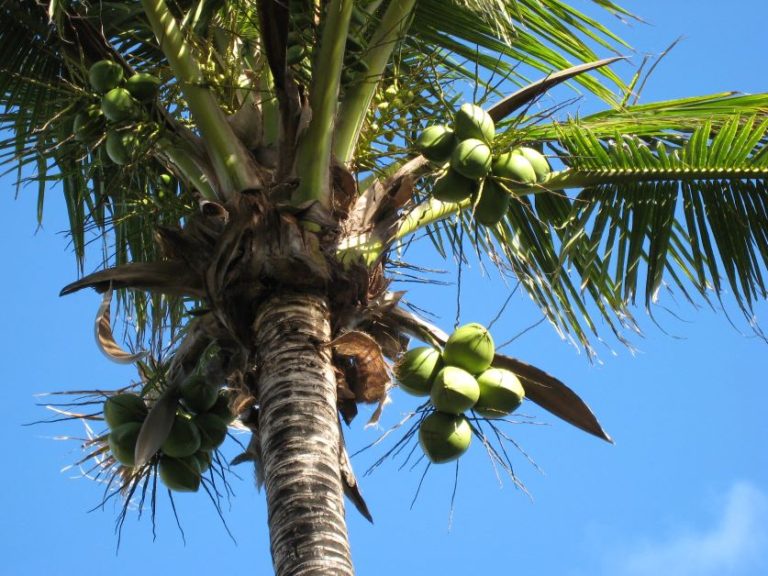Top 10 Florida Native Fruit
When you think of Florida native fruit, oranges probably come to mind. Just the words “Florida oranges” conjure up visions of roadside stands promising fresh fruit and expensive (albeit delicious) gallons of fresh-squeezed Florida orange juice for many of the state’s millions of tourists.
Here’s the dirty truth: oranges aren’t native to Florida. Not only are they not native, but Florida oranges are harder to grow now more than ever due to a disease called citrus greening. Citrus greening is a bacteria spread by a pest called the Asian citrus psyllid and once a tree catches citrus greening, the only solution is to cut it down. Before the spread of citrus greening disease, Florida produced 80% of the United States’ oranges. Now, Florida oranges only account for 42%.
Skip planting orange trees and instead grow Florida native fruit. Not only are native plants and trees easier to grow, but you won’t find these fruits at your local grocery store. The only way to try these rare treats is to grow (or forage) them yourself.
1. Southern Dewberry (Rubus trivialis)
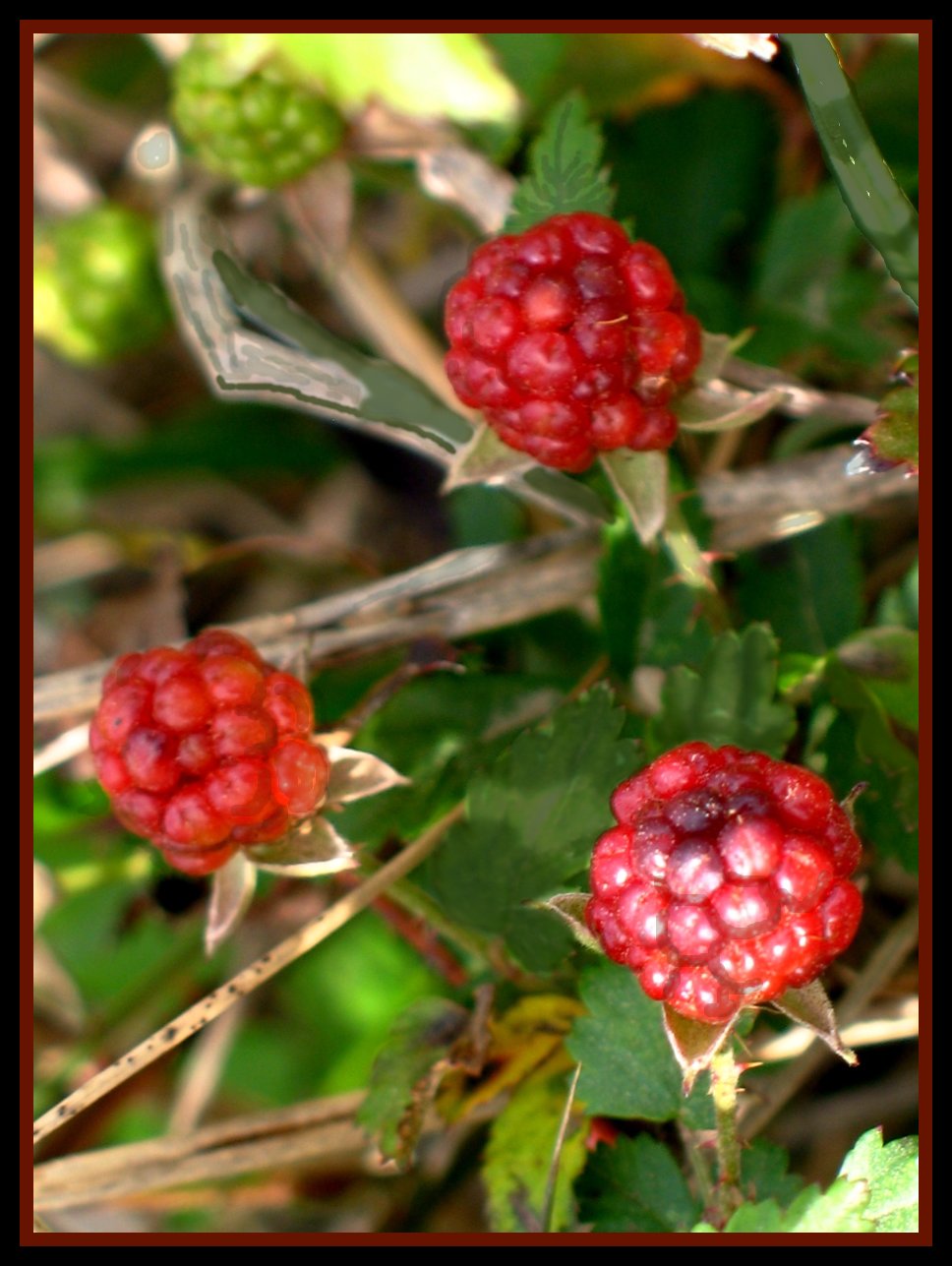
As a member of the Rubus family, the southern dewberry is related to blackberries and raspberries. Unlike raspberries and blackberries, dewberry season is in the spring — raspberries and blackberry season is in the summer. Dewberries also have a higher acidity level than their cousins, making them less sweet.
Southern dewberries grow on thorny vines and the fruit is about an inch long. The berries start out as red and turn dark purple (almost black) as they ripen. They’re good to eat straight off the vine, to make jam, jellies, and desserts.
If you’re looking for dewberries growing in the wild, keep your eyes down – the vine tends to sprawl along the ground. You’re most likely to find southern dewberry in the swamp, on the side of the road, along fences, and in the woods. As always, never eat foraged fruit without a 100% positive identification of the species.
Southern dewberry is easy to grow in USDA zones 5 through 9. You can grow dewberries from seed, seedling, or rhizome. Dewberries vines are huge — they can grow to be 15 feet long and tend to be invasive. Make sure to give it plenty of space to grow when planting it in your home garden.
Like most wild plants, southern dewberry needs very little care.
- Light – full sun to part shade
- Soil – well-draining; loam, sandy, clay, pH 5.0-7.0
- Water – average; water when soil is very dry
- Temperature – USDA hardiness zones 4 through 9; can survive extreme temperatures but ideal range is 50F-70
- Fertilizer needs – low; can feed organic berry fertilizer after plant is established for better yield
2. Mulberry (Moras spp.)

Mulberry is a popular Florida native plant with an important Native American history. The Muskogee, Iroquois, Cherokee, and Timucua tribes all used the mulberry, whether it be for its fruit, branches, or leaves.
Mulberries might look and taste like raspberries and blackberries, but there aren’t members of the same family. Mulberries are actually related to jackfruit, figs, and breadfruit. Mulberry trees yield a massive amount of sweet fruit that is perfect for eating fresh, making jams and sauces, or as a filling for pies.
Mulberries come in a few different types, including dwarf varieties cultivated specifically for containers and patios. This makes mulberry a prime choice for Florida urban gardening.
For everything you need to know to grow a ton of mulberries, check out my comprehensive mulberry growing guide.
3. American Persimmon (Diospyros virginiana)

The American persimmon is a tree commonly found in North and Central Florida. You can also find it growing wild in South Florida, but not as often. Predictably, this Florida native loves humidity and thrives in a wide range of soil types, including sand.
The American persimmon tree is a slow grower that can live to be more than 100 years old. It can also take more than 10 years for an American persimmon tree to bear fruit. This tree is not self-pollinating, so you’ll need at least 2 to get fruit.
There are several species of persimmon, and they are classified as astringent or non-astringent. American persimmon is the astringent type. This means it has a lot of tannins that dry out your mouth if you eat them before they’re fully ripe. When an American persimmon is ripe, though, it’s super sweet and tastes a little like caramel. An American persimmon that’s ready to eat is very soft (almost jelly-like) and bright orange. The fruit will also ripen in the refrigerator after harvest.
The Florida American persimmon season is from August to November. They can be eaten straight from the tree or be used in sauces, desserts, breads, and jams.
- Light – full sun
- Soil – any well-drained soil will do; pH 5.8 to 6.5
- Water – drought-tolerant
- Temperature – USDA hardiness zones 4 through 9; wide temperature range withstanding 10F to 95F.
- Fertilizer needs – low; don’t fertilize for the first few years of growth; if growth is stunted after tree is well-established, feed organic 10-10-10 fertilizer in spring
4. Ground Cherry (Physalis)
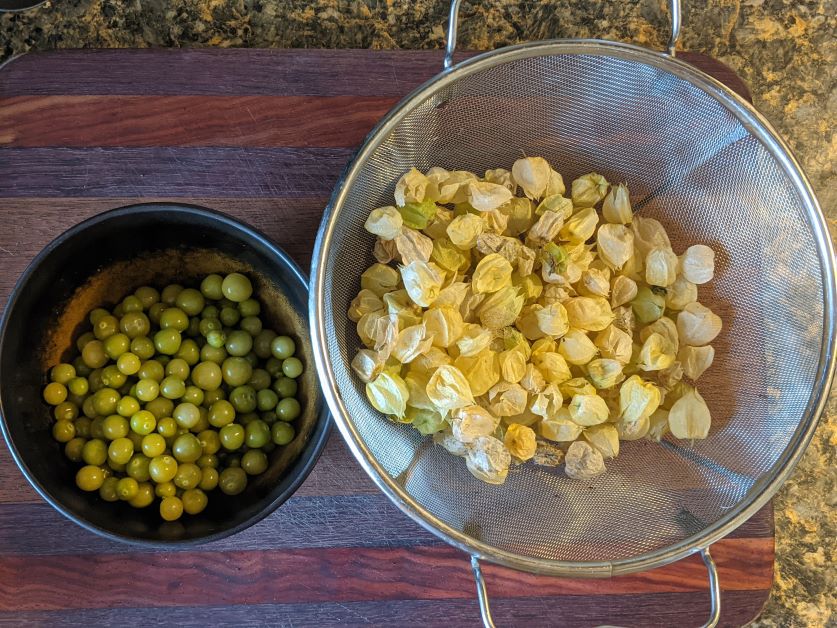
Although they’re known as the cape gooseberry, ground cherries aren’t gooseberries at all. This Florida native is a member of the nightshade family, making it a cousin to tomatoes, tomatillos, and potatoes.
The ground cherry plant is low-lying and self-seeding. They’re technically an annual but it’s not uncommon to find “volunteer” ground cherry plants pop up from fallen berries of past seasons. Although the plant isn’t ugly, this is strictly a food plant and not especially decorative.
Ground cherries are a delicious combination of sweet and tart. They’re about the size of a small grape and like the tomatillo, they grow inside a papery husk.
This plant is easy to grow, a heavy producer, and doesn’t take up a ton of space. For more information on how to, check out my ground cherry growing guide.
5. Chickasaw plum (Prunus angustifolia)

Chickasaw plum is perfect for gardeners who want to turn their property into a food forest. They’re a quick-growing tree that put out a ton of suckers around the base of their trunk. This means that 1 Chickasaw plum tree can turn into a small field of Chickasaw plum trees over the course of just a few years. The branches are a bit thorny and the tree grows wider than it does tall. It looks very shrub-like.
Because Chickasaw plum needs a cool period to set fruit, it does better in North and Upper Central Florida. The fruits are small (around the size of a ping pong ball), and they range from tart to sweet. There are many different cultivars of Chickasaw plum, and some bear sweeter fruit than others. Many people like to use Chickasaw plums to make wine and jelly. They’re also tasty as a hand fruit, as long as you don’t mind spitting out some pits. In Florida, you can expect fruit from late May through late June.
- Light – full sun to dappled shade
- Soil – any well-drained soil will do; pH 5.8 to 6.5
- Water – fairly drought-tolerant but does best with regular watering
- Temperature – USDA hardiness zones 5 through 9; wide temperature range withstanding 10F to 95F.
- Fertilizer needs – low; don’t fertilize for the first few years of growth; if growth is stunted after tree is well-established, feed organic 10-10-10 fertilizer in spring
6. Flatwoods Plum (Prunus umbellata)
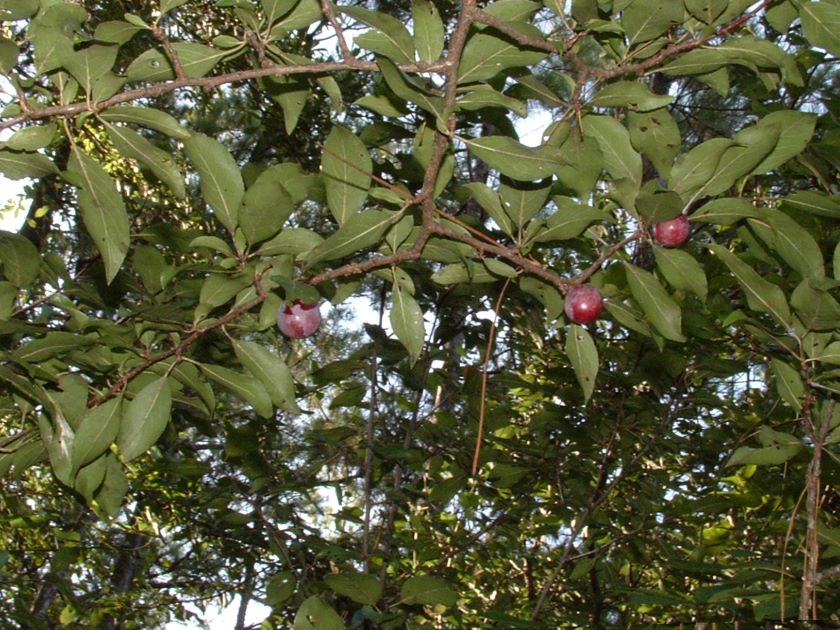
It’s easy to confuse the Flatwoods plum with the Chickasaw, but there are a few main differences between the two. The Flatwoods plum doesn’t send out as many suckers as the Chickasaw, making them a better choice for gardeners who prefer a tidier look. They also fruit in late summer and early fall, unlike Chickasaw’s spring and early summer harvest. Flatwoods plums are more bitter than the Chickasaw and are more often used in jams and jellies instead of eaten fresh.
Flatwoods plum is also known as hog plum because they’re sometimes used as animal feed. Don’t let this dissuade you – this is still a cool specimen to add to your Florida garden. The Flatwood’s plum is a stunner when flowering and attracts a huge amount of pollinators.
- Light – full sun to part shade
- Soil – any well-drained soil will do; pH 5.8 to 6.5
- Water – fairly drought-tolerant but does best with regular watering
- Temperature – USDA hardiness zones 8A through 9B
- Fertilizer needs – low; don’t fertilize for the first few years of growth; if growth is stunted after tree is well-established, feed organic 10-10-10 fertilizer in spring
7. Sea Grape (Coccoloba uvifera)
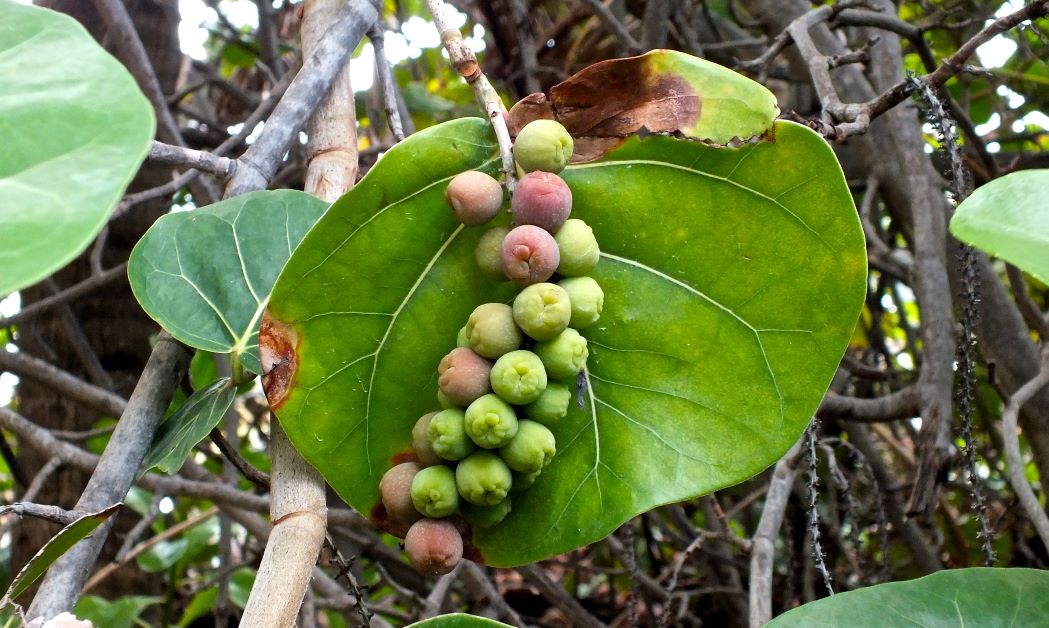
If you’re a Floridian with beach-front property, then the sea grape is the native fruit for you. Not only are sea grapes tasty, but the plant makes an awesome windbreak, privacy hedge, and can even help nesting sea turtles by blocking light pollution.
Most people know the sea grape for its distinctive round leaves and bunches of edible grape-like fruit. The sea grape is versatile – you can prune it as a low-lying hedge, let it grow tall like a tree, or even grow it in a container as bonsai.
Sea grape fruit is a mix of sweet and sour and is often used for making jams and jellies because of its large, inedible pit. The berries start off as green and slowly turn a dark purple color as they ripen over summer. They’re usually ready for harvest by late August.
Check out my sea grape growing guide for all you need to know to grow this pretty, edible plant in your Florida garden.
8. Cocoplum (Chrysobalanus icaco)
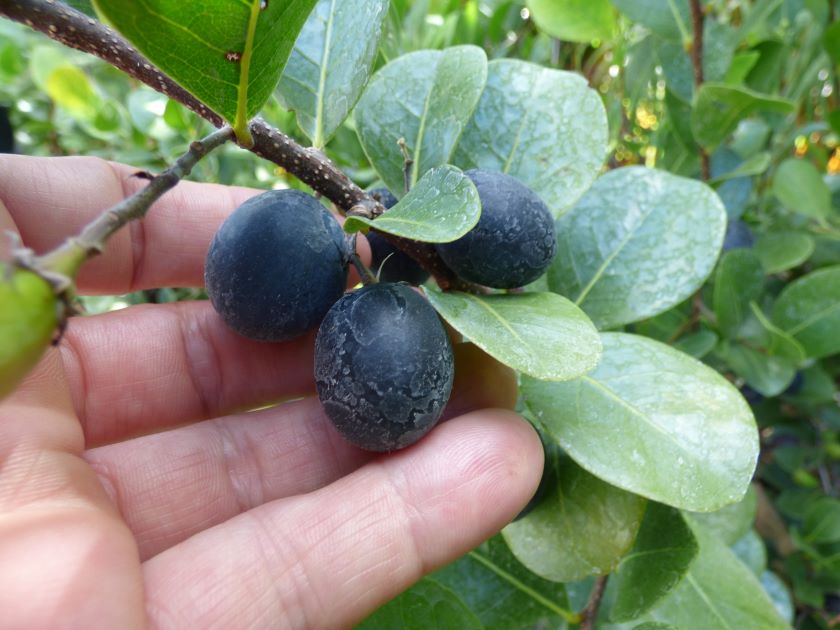
Cocoplum is a Florida native fruit perfectly suited for those in Lower Central and South Florida.
The cocoplum fruit is small and has a large, edible pit. You can eat the pits raw or roasted, and most people say that they taste like almonds. An edible pit isn’t the norm for most plums (or plum-like) fruit. The pit of the Flatwoods plum, for instance, is poisonous because it contains cyanide.
The fruit itself has a mild flavor but an interesting texture – it’s sort of light and fluffy, like cotton candy. Because of their mild flavor and large pits, most people cook cocoplum down into a reduction and use that to make jelly instead of eating them raw.
Cocoplum fruit comes in dark and light varieties. The dark variety starts off pink and ripens to dark purple and the light variety ranges from cream to white to whitish pink. There are 2 cocoplum seasons in South Florida – one in late spring and another in early fall.
For more information, check out my article All About Cocoplum.
9. Passion Fruit (Passiflora)
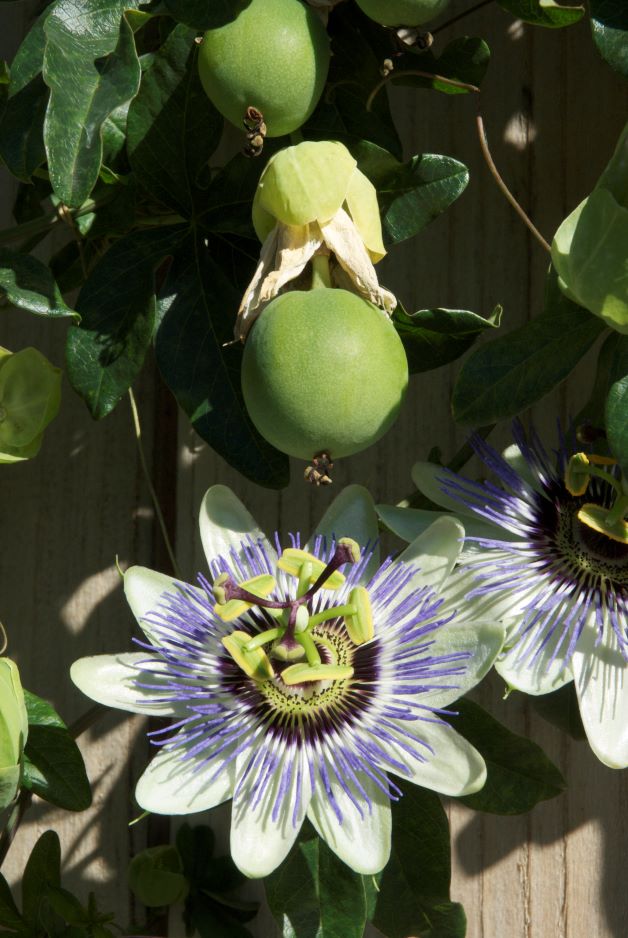
Passion fruit is a popular Florida native species grown for its unique flowers and edible fruit. Passion fruit is a fast-spreading vine that’s great for covering trellises or creating a living wall on a fence. Its showy, almost alien-like flowers turn into edible fruit when pollinated.
Unlike some plants that only grow in South Florida or only grow in North Florida, passionfruit thrives in the entire state. It’s an evergreen in Central and South Florida and a perennial that dies back in hard frost in North Florida.
Passion fruit is sweet, tart, and jelly-like. The seeds are edible and give the passion fruit a pleasant crunchy texture. These fruits are usually used in baking, in drinks, or eaten fresh off the vine.
You can find all the information you’ll need to grow passion fruit in my passionflower vine growing guide.
10. Pond Apple (Anonna glabra)

Pond apples are a little controversial because they aren’t the tastiest fruits in the world. Most agree that they smell amazing but as far as flavor goes, the jury’s still out. Some think pond apple fruit tastes good, but others describe them as mild to overripe and rancid. Even so, one animal in particular really loves the pond apple – the American alligator. For this reason, pond apples are also known as alligator apples.
Pond apple fruit is safe and edible, but the seeds are poisonous. Not only are the seeds poisonous, but there are a lot of them, too. To eat a pond apple, you have to suck the flesh from the seeds. Be careful not to accidentally swallow or bite into a pond apple seed when eating.
Other than eating them raw, pond apples are a popular ingredient in tropical parts of the world for use in jams and drinks.
Pond apples grow on trees and are found in swampy areas. This is a common specimen in the Everglades but is considered invasive in Australia and Sri Lanka. At 15 to 20 feet tall, the pond apple isn’t a huge tree but under the right conditions, it can grow up to 40 feet tall. Most people plant pond apple as a landscape tree rather than an edible one.
- Light – part shade
- Soil – moist, boggy, fertile soil; acidic to neutral pH
- Water – not at all drought-tolerant; will not grow in dry soil
- Temperature – USDA hardiness zones 10A through 12B
- Fertilizer needs – if leaves turn yellow, feed organic iron fertilizer
Featured Photo Credit: Rastoney

